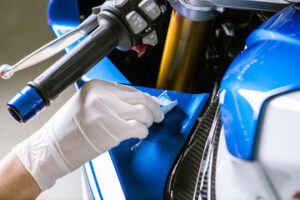Unlike fossil fuels, solar energy never runs out. Solar Helena MT power can help cut pollution and stress on your local energy system, resulting in lower rates for everyone.

The upfront cost of solar panels may be higher than traditional electricity rates, but financial incentives like federal and local tax credits, low-interest loans, and net metering programs can help offset this expense. Many homeowners also see dramatic savings on their energy bills, reducing or even eliminating monthly costs and creating positive return on investment calculations over the system lifetime.
As the popularity of solar energy continues to grow, more and more homeowners are asking if it’s time for them to invest in a renewable energy source. If you’re considering solar, you can use online calculators and project cost averages to determine if it would make sense for your home.
The installation process accounts for 10-20% of the total solar panel system cost, with labor expenses being the primary factor. Professional installation is crucial for safety, optimal performance, and maintaining warranty coverage. Installers can also provide other services, such as roof assessment, design, sales proposals, permitting templates, and more.
Solar panel efficiency depends primarily on how much sunlight they receive. They produce the most power when the Sun is brightest – during the middle of the day, for example – and less early and late in the day or during the winter. They can also reduce the amount of energy they produce if they’re exposed to excessive heat or shade.
Once they’re installed, solar panels require very little maintenance. They can be cleaned 2-4 times per year with water and a soft brush, costing nothing at all if you do it yourself. However, annual professional inspections are recommended to check for damage and ensure optimal performance.
Solar panel performance typically degrades at a rate of 0.5% to 1.8% per year, resulting in minimal decreases in energy production over the lifespan of the system. This gradual loss in efficiency is accounted for in the warranty coverage offered by manufacturers, which guarantees at least 80% efficiency over 25 years.
Energy Independence
Powering your home or business with solar panels can give you energy independence, reducing the amount of money that you need to pay for utilities and reducing your carbon footprint. This is because solar is a renewable source of energy, which is better for the environment than traditional fossil fuels that emit harmful pollutants and greenhouse gasses into the atmosphere.
Solar energy can also provide a reliable, long-term electricity supply even when the grid is down. It can be used in places where access to utility power is limited or expensive to build, and is particularly beneficial for remote homes and businesses. Solar systems can be paired with battery storage solutions, which allow you to store excess power for use at night or during a grid outage.
Depending on your energy consumption and the size of your system, it may be possible for you to be completely independent of the grid. Ideally, you should look into making efficiency improvements before going solar to lower your consumption and help you achieve this goal.
If you still consume more energy than your solar system produces, the excess goes back to the grid and your utility company credits you with this energy. This can add up to significant savings over time. You will also see a dip in production in winter because of shorter days and less direct sunlight, but the summer will make up for this.
The most common type of solar panel is a photovoltaic cell. This cell consists of a semiconductor material with an electrode at the bottom and a photoactive layer on top. When a photon hits the photoactive layer, it excites the electrons, which then move to the electrode, leaving behind holes (or positively charged ions). These positive charges can then be turned into electricity by an inverter.
The process of creating electricity using solar panels is simple, making it a reliable energy source that requires little maintenance. However, to get the most out of your solar panel system, you will want to take steps to optimize the installation and design. For example, you should consider the location of your solar panels and the angle that they are oriented to the sun. The optimal tilt for your solar panel system will depend on your local climate, the season, and the pitch of your roof.
Environmental Impact
Solar panels convert sunlight into clean, renewable energy, reducing a home’s carbon footprint and lessening dependence on fossil fuels. In addition, they can help reduce environmental problems associated with fossil fuel generation, such as air and water pollution.
In addition, solar energy supports local economies by creating jobs in the design, manufacture, and maintenance of solar energy systems. The use of solar panels also creates opportunities for energy independence in areas that currently lack access to traditional electricity services.
The environmental impact of solar panels depends on the location, size and design of each installation. Rooftop installations and solar farms that are built on degraded land tend to have lower impacts than large-scale projects constructed in pristine natural areas. Incorporating best practices for site selection, design and land management can minimize negative effects on wildlife and ecosystems while maximizing renewable energy production.
Like other power sources, solar generates minimal greenhouse gas (GHG) emissions. However, the manufacturing process for solar panels can produce GHG emissions if it uses a significant amount of fossil fuels to heat and cool equipment. Additionally, sourcing raw materials used in solar panel manufacturing may require the transportation of goods, which can add to greenhouse gas emissions.
Solar technology produces fewer GHG emissions than other renewable energy sources, such as wind turbines and biomass. Moreover, solar panels have the potential to offset more than the total GHG emissions from a typical fossil-fuel-powered home over its lifespan.
Additionally, the use of solar energy will decrease a household’s electricity consumption and thus reduce its demand for grid-based energy. This can lead to less energy waste, which in turn will reduce the amount of harmful GHGs emitted by the grid.
Solar systems require very little energy to operate, and when properly angled, they don’t increase the risk of bird collisions with buildings or structures. However, the amount of energy produced varies throughout the year as the sun’s position in the sky changes, so homes will need to adjust their array settings as the seasons change. Water is also needed to cool the equipment that powers solar panels, which could lead to overuse or contamination of groundwater.
Job Creation
Besides the environmental and economic benefits, solar energy also provides a wide range of employment opportunities. These jobs can be found in a number of sectors, including manufacturing, installation, and research. In addition, solar power is increasingly being used to generate electricity at the utility scale. This requires large-scale solar farms, which can employ thousands of workers.
The global solar industry is growing rapidly, creating more jobs than fossil fuels and other renewables combined. However, the quality and availability of solar energy jobs varies significantly from country to country. This is because solar jobs are distributed unevenly and may be more difficult to access for some demographic groups. This makes it important to understand the quality of solar jobs, and to take into account social equity concerns as part of a just transition.
Academic research has highlighted the importance of incorporating a sustainable development lens in the analysis of solar jobs. This framework includes the consideration of a wider range of issues, from regional disparities to the challenges of ensuring that training is delivered at an appropriate scale. It also highlights the need for integrated policy approaches that pair climate action with explicit social and economic development goals, ensuring that the transition to solar offers genuine benefits for all communities.
Solar jobs are often viewed as ‘green’ jobs, which typically mean work that contributes to the preservation or restoration of the environment. This designation is especially relevant for solar jobs, which reduce reliance on fossil fuels and therefore lower emissions of greenhouse gases and other pollutants.
In addition to providing employment, solar energy can improve local economies and boost economic development. In developing countries, this can be particularly important, as many of these nations rely on imported oil and coal for their power needs. In addition, the cost of solar technology is much lower than that of fossil fuels. As a result, solar energy can be a more affordable and environmentally friendly source of power for developing nations.
Solar panels convert sunlight into electricity through the photovoltaic effect, a process that involves the absorption of light by semiconductors such as silicon. This light then excites electrons in the silicon, knocking them loose and creating a flow of electricity. The panels are then arranged in arrays to create a power plant, which can provide energy for homes and businesses.




